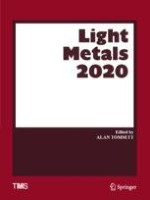2020 | OriginalPaper | Buchkapitel
State Parameter-Based Simulation of Temperature- and Strain Rate Dependent Flow Curves of Al-Alloys
verfasst von : Bernhard Viernstein, Philipp Schumacher, Benjamin Milkereit, Ernst Kozeschnik
Erschienen in: Light Metals 2020
Aktivieren Sie unsere intelligente Suche, um passende Fachinhalte oder Patente zu finden.
Wählen Sie Textabschnitte aus um mit Künstlicher Intelligenz passenden Patente zu finden. powered by
Markieren Sie Textabschnitte, um KI-gestützt weitere passende Inhalte zu finden. powered by
